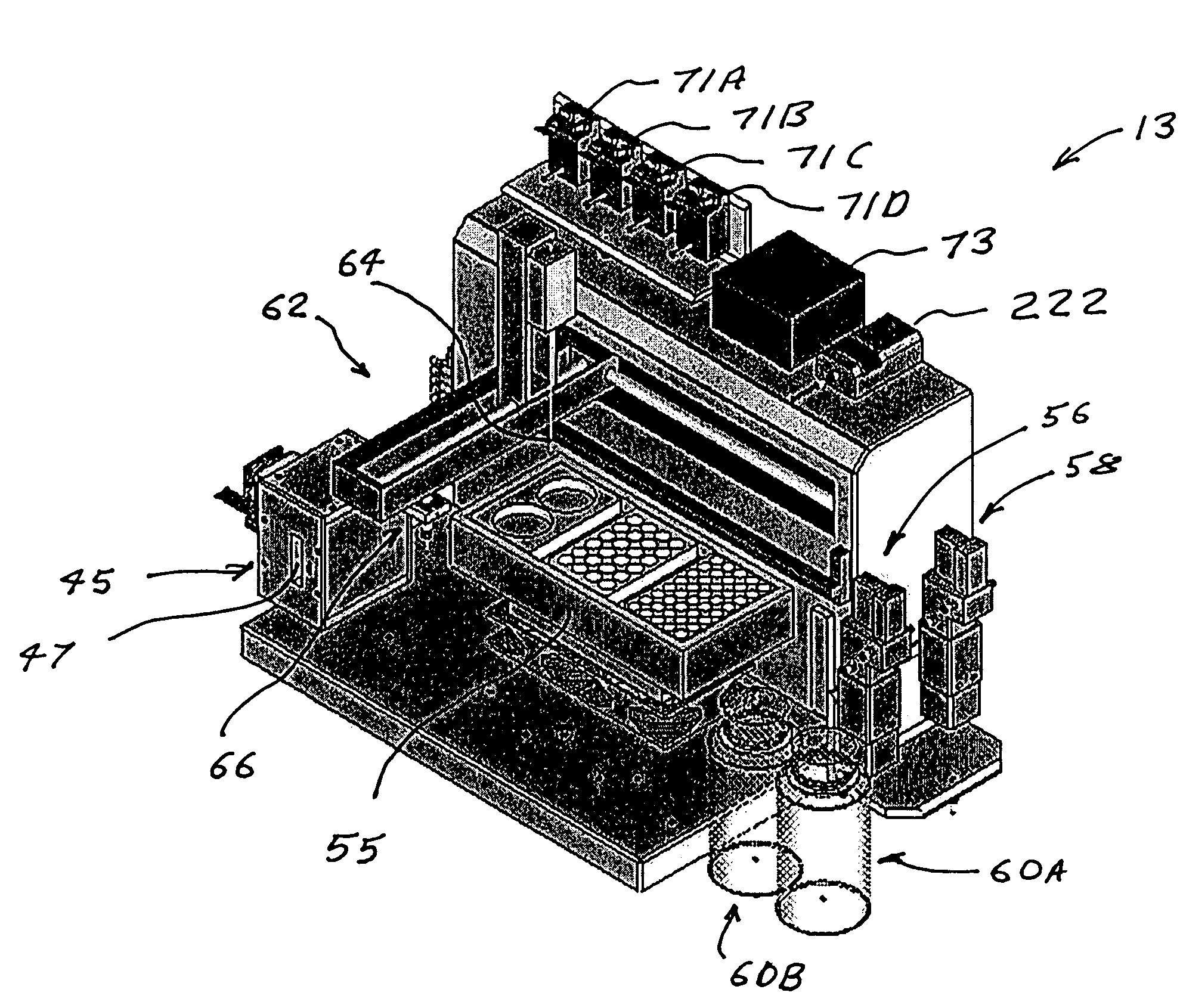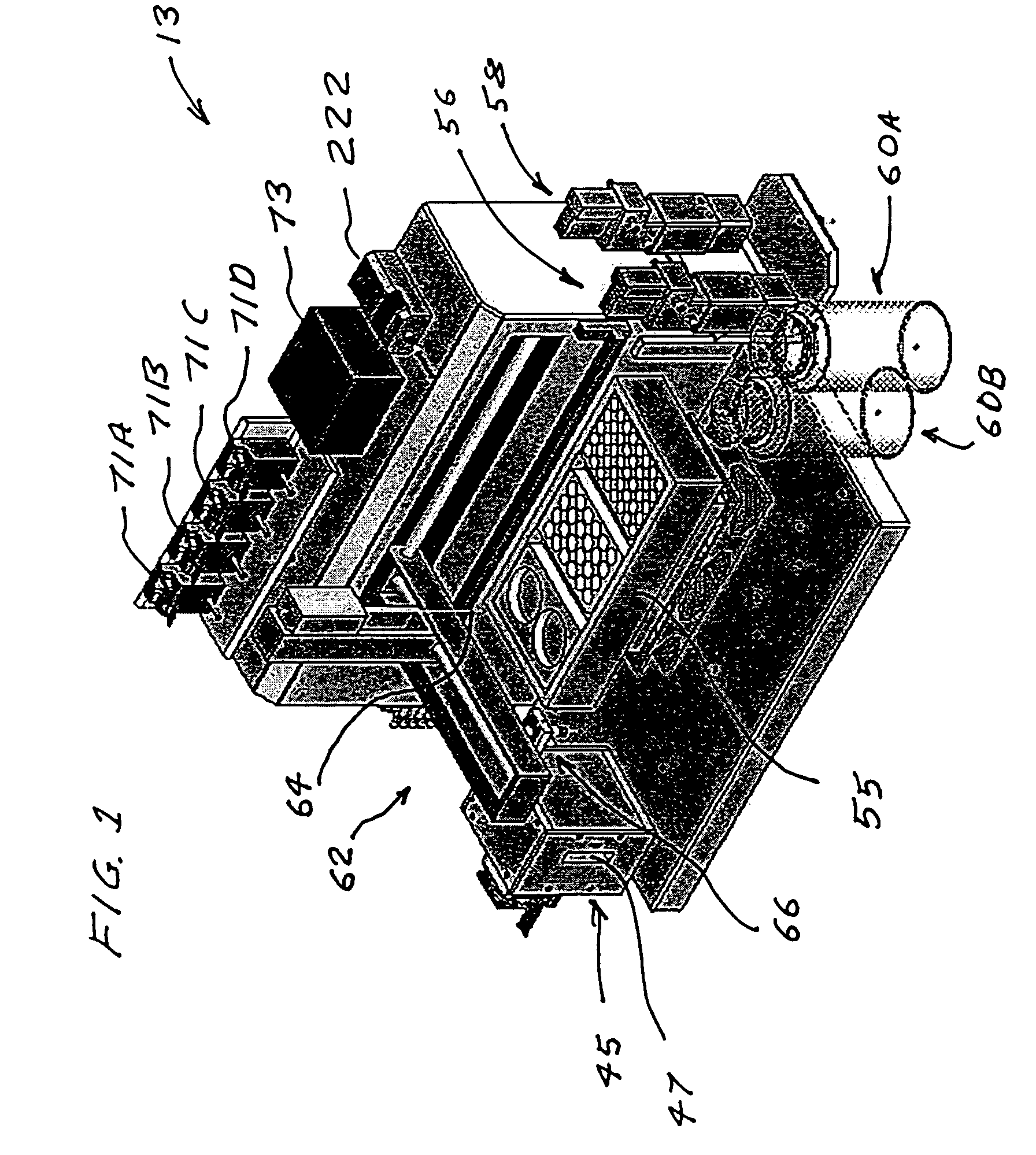Optical sensor and methods for measuring molecular binding interactions
a molecular binding and optical sensor technology, applied in the field of optical sensors, can solve the problems of high cost of spr sensors, impracticality of many applications, high cost of resonant mirror systems,
- Summary
- Abstract
- Description
- Claims
- Application Information
AI Technical Summary
Benefits of technology
Problems solved by technology
Method used
Image
Examples
example demonstrating
Chemical Features of Preferred Embodiments
[0042]In addition to providing the key component for the optical measurement subsystem, the porous section observation regions 20A, B, C and D also serve as three-dimensional scaffolds to immobilize specific molecules. The regions provide a very large surface area in the form of cylindrical walls of pores 90. Ligand molecules are attached, or bound, to the pore walls 90 by the use of specific linker molecules. The linker molecules are attached to the pore walls by the use of surface chemistry, and the ligand molecules are then attached to the linker molecules.
[0043]FIGS. 9A-9F show a specific set of molecular interactions involved in an example of an application of the present invention. FIGS. 9A and 9B show steps a) and b) of a preferred method for immobilizing ligand protein molecules to the walls of pores 90. Steps a) and b) preferably are performed in a laboratory independent of the device shown in FIG. 1 and steps 9C-9F take place withi...
PUM
| Property | Measurement | Unit |
|---|---|---|
| depths | aaaaa | aaaaa |
| depths | aaaaa | aaaaa |
| total length | aaaaa | aaaaa |
Abstract
Description
Claims
Application Information
 Login to View More
Login to View More - R&D
- Intellectual Property
- Life Sciences
- Materials
- Tech Scout
- Unparalleled Data Quality
- Higher Quality Content
- 60% Fewer Hallucinations
Browse by: Latest US Patents, China's latest patents, Technical Efficacy Thesaurus, Application Domain, Technology Topic, Popular Technical Reports.
© 2025 PatSnap. All rights reserved.Legal|Privacy policy|Modern Slavery Act Transparency Statement|Sitemap|About US| Contact US: help@patsnap.com



